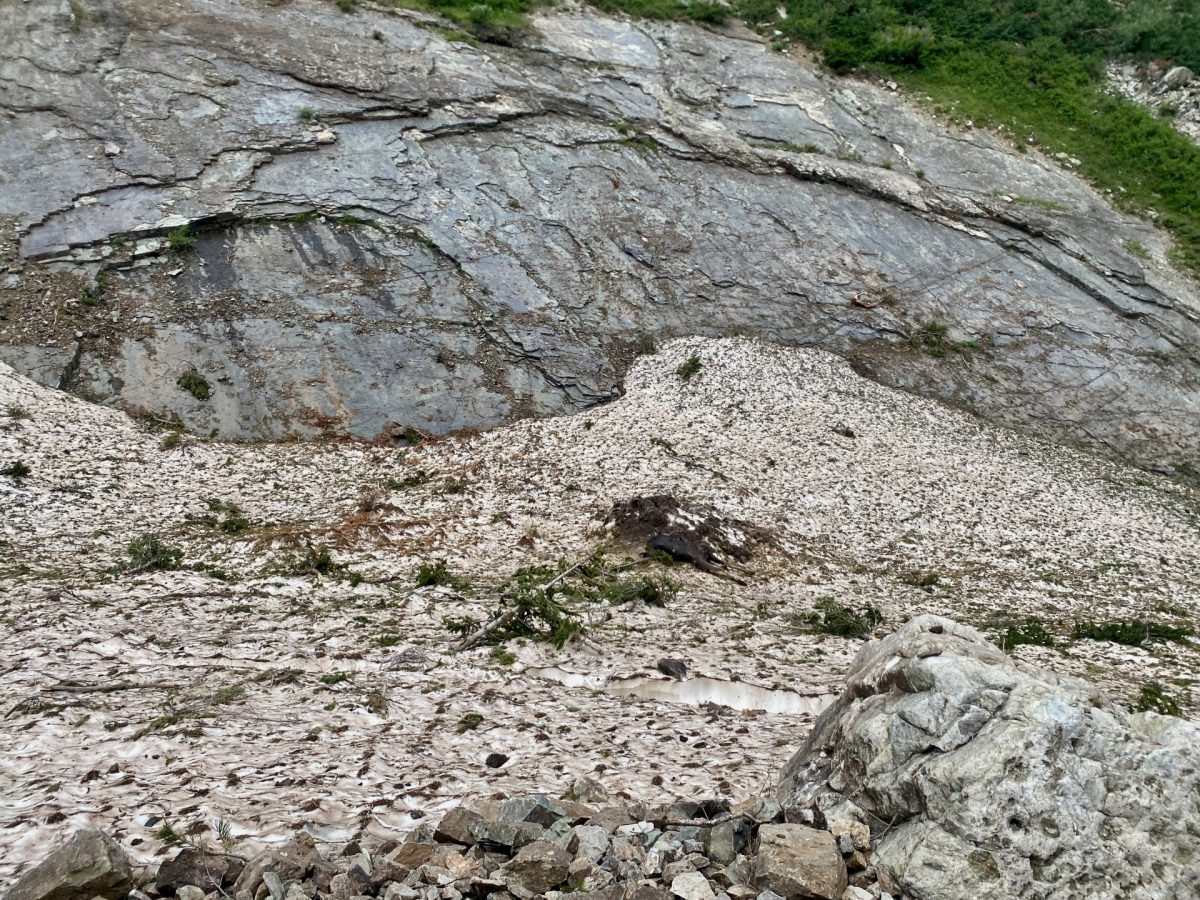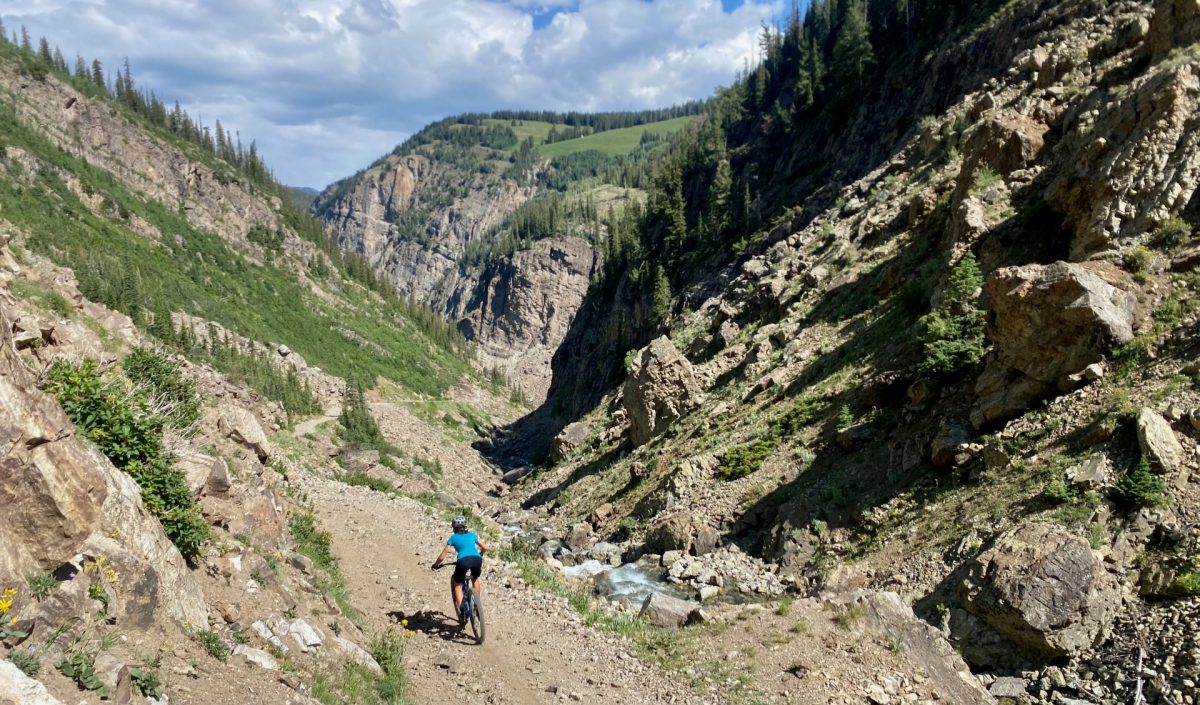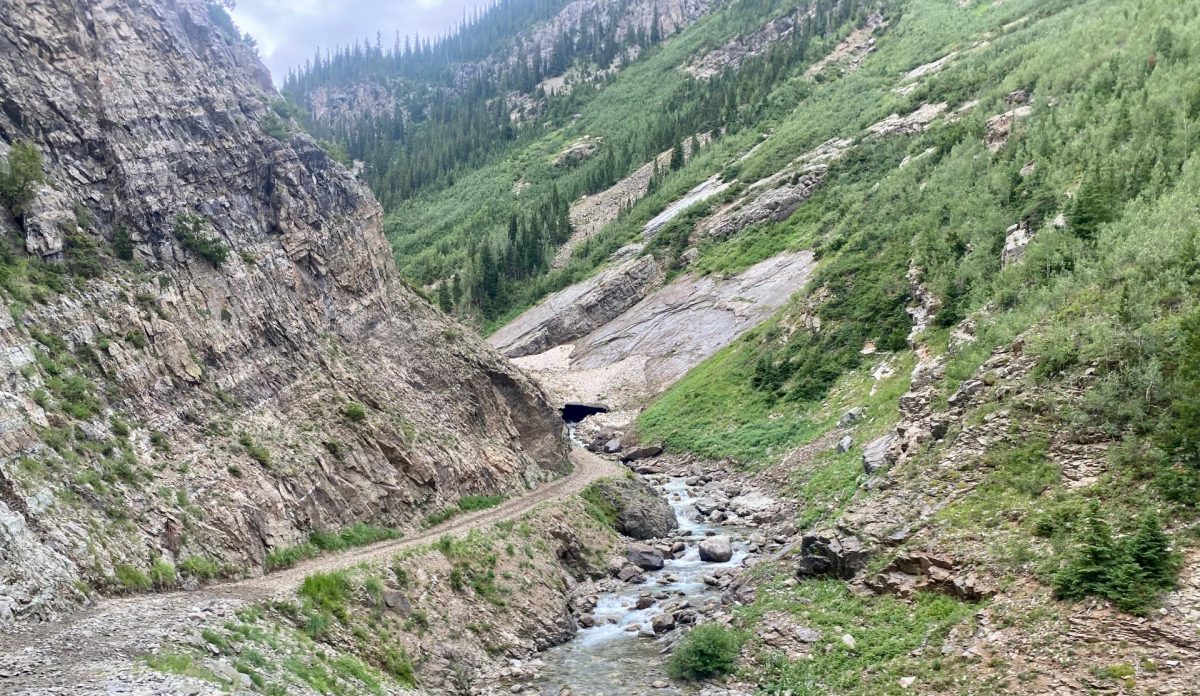A two-wheeled journey through Schofield Pass’s avalanche terrain
In late July in Colorado, the last vestiges of snow from the mountain tops disappear. Skiers patiently wait for the first flakes to coat the mountains, which ironically will count towards the snowfall totals of the previous year. In summer we wait patiently, but the mountains’ calls never cease.
For me, two-wheeled adventures spent trundling through unsettled and exfoliating scree often replace the smooth gliding through the mountains. Although never as elegant as its winter counterpart, mountain biking has given me the freedom to explore unfettered from avalanche conditions that keep me closer to home in the winter. I still chase snow, but in a new way. Every week’s melting allows me to push higher into the mountains where post-holing had previously awaited me.
After spending the first half of July in Crested Butte, I noticed the last trails and passes, even in the highest places, were free of snow and downed trees. This landscape transition and high-country thaw coincided with the need to finish clearing my yard in Redstone of down aspens from a ferociously windy spring and to collect three weeks of unclaimed mail.
To get to Redstone, Manasseh and I left on bikes over Scofield, the pass connecting the towns of Crested Butte and Marble, locales known well to most Wildsnow readers. The path home also moves through the less well-known towns of Gothic and Crystal and past some of the most ruggedly beautiful mountains and cliffs in the state.
I had always appreciated the goofy uphill-downhill telemark race at Mount Crested Butte, “The Al Johnson,” where racers celebrate this half-disco, half-skimo race in full costumed regalia. The race honors Johnson, the postman who delivered mail on skis between CB and Crystal — a 18-mile trip (one way) through treacherous avalanche terrain.
It always made me sad that our ski community couldn’t race between the two towns. After all, Al was able to carry 40 pounds of mail on his back and with little to no avalanche knowledge, brave the trip weekly. But, liability and modern avalanche education meant that running the gauntlet of enormous destructive paths was something only meant for long ago generations.
On our modern and more efficient bike quest to pick up the mail, we made it up past Gothic along the East River, where I had pushed my bike through snow and avalanche debris only two weeks before. The warm weather had released the pent-up demand of Maroon Bells Hikers, and we were soon coated with a thick layer of dust from passing vehicles.
But by the time we left Scofield Park, a small collection of cabins above 10,000 feet, recent rock fall, and bloated mountain streams kept even the most intrepid four-wheeled vehicles at bay. Life here still seemed quiet and transitioning into full-bloom summer.
As we descended through the freshly settled rocks chunks, a pair of dirt bikers who abandoned their rigs far below cheered us on. Then we could see the far bigger avalanche path that had broken off Treasure Mountain months earlier. I have spent many springs pushing my bike along these rocks and marveling at trees snapped like toothpicks littering the slopes. But I could not recall a complete snow bridge across the Crystal that lasted so late into summer.
After an evening spent chainsawing aspen and stuffing our faces with Slow Groovin BBQ, it was time to reverse the route. We left Redstone the next morning, bikes loaded with mail (not quite the 40 pounds Johnson was known to transport), and two pounds of coffee to retrace our steps.
Elbowing past jeeps and four-wheelers was worth it as these visitors appreciated our human-powered push deeper up the pass. Right before the avalanche debris on Treasure, we passed a lone dirt biker shaking his arms, saying, “I ain’t ever ridden through shit like that before.”
We were left to ourselves to push our bikes up the rocky path.

Looking upslope at the avalanche debris: the moose had been caught in a slide and subsequently melted out this summer.
I soon caught the unmistakable scent of death among the fractured pines half buried in the snow, wondering how trees alone could have the smell of decay. I quietly pushed my bike, studying the tunnel of ice. Then I saw the massive moose corpse that had recently thawed out.
Every time I encounter animals in the high alpine, I muse about how much better suited they are for the mountains. I wonder if their bodies alone are more adapted for the environment or if their lack of ego and immunity to the lure of the powder turn makes it easier to choose the safest line through dangerous terrain.
It was my first time seeing an animal swept up and entombed by winter’s destructive force, crossing terrain with no idea what awaited it thousands of feet above. The sighting served as a crucial reminder for me, even in the hottest summer month, of how cruel winter can be. It also left me with an appreciation for all my safe ski turns, only one valley over, and my sore wrists due to much ungraceful summertime bike pushing. And thankful that Al Johnson had enough successful crossings of this big terrain to have a tele race named after him, reminded me to renew my commitment to safety and avoid the unfortunate fate of Ms. Moose.
Doug Stenclik is an avid skimo racer and ski mountaineer who lives for sharing the amazing sports of ski touring and splitboarding. Since his first time on skins he was hooked and the obsession has taken him all over the United States and the world pursuing the human powered ski turn. He founded Cripple Creek Backcountry in 2012 and took over the Colorado Ski Mountaineering Race Cup in 2014 to spread knowledge and the love of the sport. In 2019 he took a step back from the ski shop and race promoter life to become a publishing partner with WildSnow.


